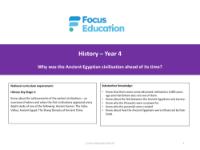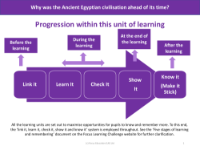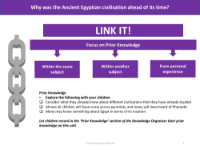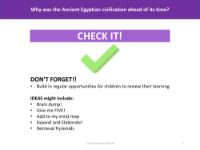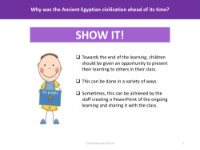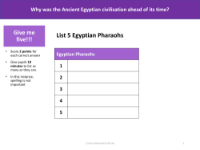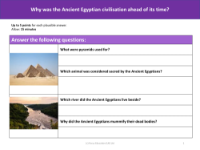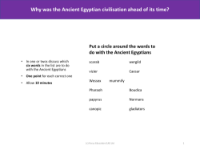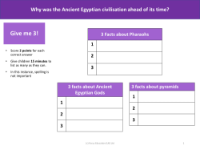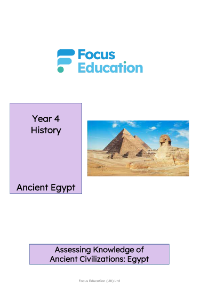Knowledge organiser - Egyptians - Year 4
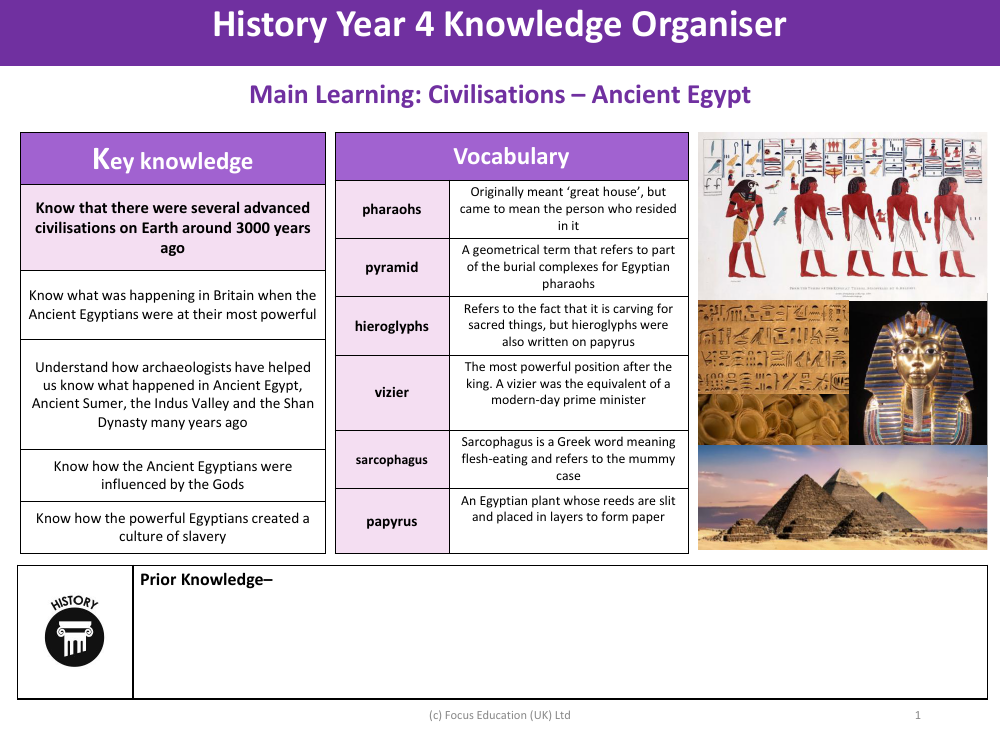
History Resource Description
In Year 4, students delve into the fascinating world of Ancient Egypt, discovering the intricacies of a civilisation that flourished around 3000 years ago. The vocabulary section of the knowledge organiser introduces key terms such as 'pharaohs', which evolved from meaning 'great house' to denote the rulers who dwelled within. 'Pyramid', a term rooted in geometry, describes the monumental tombs built for these Egyptian rulers. Students learn about 'hieroglyphs', the sacred carvings that adorned temple walls and were also inscribed on papyrus, the ancient paper made from a native plant. The 'vizier' is presented as the most powerful official after the king, akin to a modern-day prime minister, while 'sarcophagus' is a Greek word that refers to the mummy cases, literally meaning 'flesh-eating'.
The knowledge organiser's key knowledge section sets the stage for understanding the broader context of the era by acknowledging other advanced civilisations of the time and contrasting what was happening in Britain during Ancient Egypt's zenith. It highlights the role of archaeologists in uncovering the past, allowing us to piece together the lives and beliefs of the Ancient Egyptians, including their reverence for the gods and the societal structures that led to a culture of slavery. This historical exploration is part of the main learning theme 'Civilisations – Ancient Egypt', which builds upon the prior knowledge students have acquired in their history studies. The organiser serves as a guide for the rich and complex history that shaped Ancient Egypt, providing a foundation for Year 4 students to understand the legacy of one of the world's most remarkable ancient cultures.
